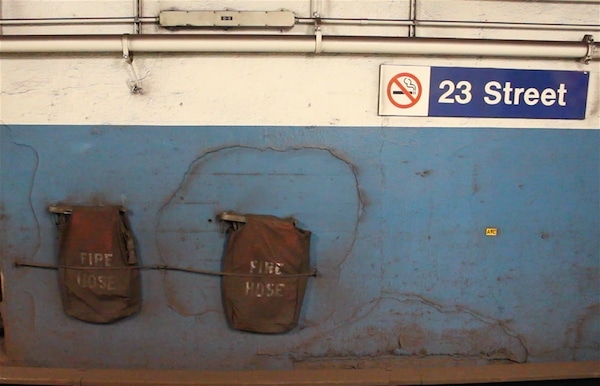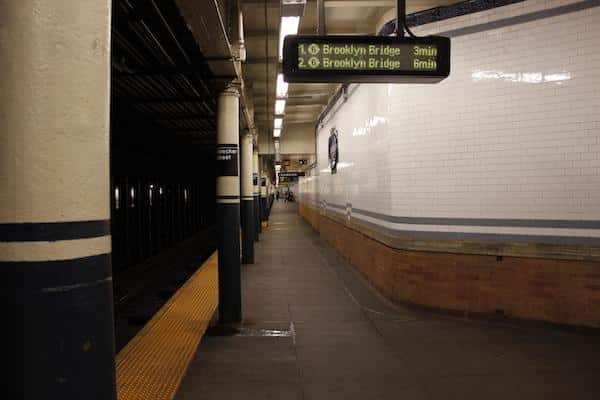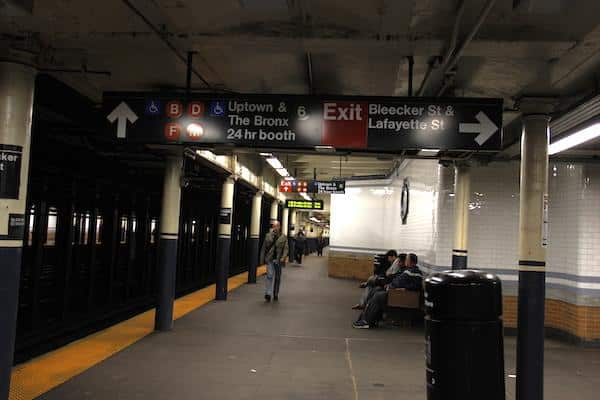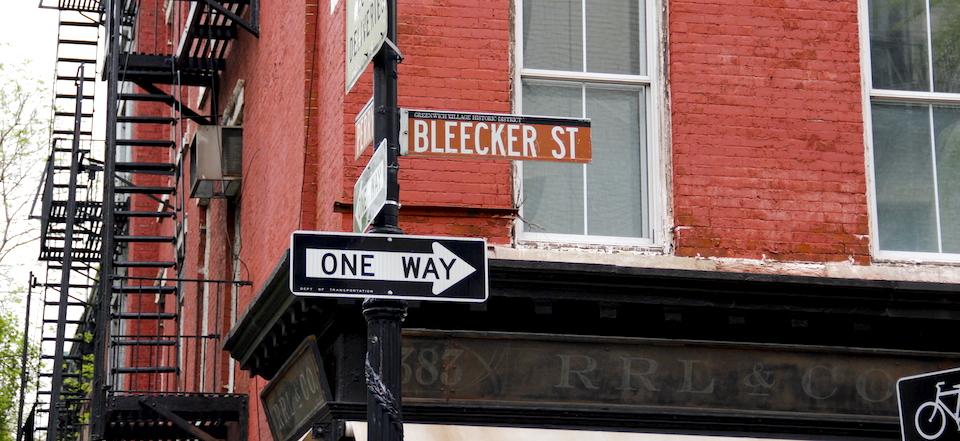With 468 active stations, 24 lines and 368 km of tracks, the New York subway is one of the largest in the world. With so many options, it’s easy to ditch the car, escape the metropolis’s traffic jams and head underground to get around the city. However, those who are already accustomed to other subway systems, whether in São Paulo, London or Paris, will realize that the one in NYC is not as intuitive and easy. Therefore, contrary to what we usually do, it is often not enough to just go to the first station that comes your way and try to find your way inside. You’ll need a little more planning if you want to get around New York easily and efficiently by subway.
Understanding the Map
The New York subway system is mainly made up of straight lines that cross the island of Manhattan from north to south. Therefore, it has few connections and transfer points compared to other subways out there. The options for moving east-west may force you to take a few turns or adopt unintuitive routes.
See too: Where to stay in New York: the best neighborhoods
Attention: It is not a good idea to travel to the United States without international health insurance, as hospital costs there are very high. Read here how to find cost-effective insurance.
By analyzing the subway map, what can we learn? That the number lines (1 – 7), in general, move in a straight line and are parallel for most of the way. Therefore, if you take line 1, you will be able to travel from north to south of Manhattan, but only on the west side of the island. Line 6 makes the same direction, but on the east side, while lines with letter names (A – S) have more transfer points, as they eventually end up crossing the island. The SIR line serves Staten Island.
Choosing the season

Remember how I said you can’t get into the first station you see? Unlike every other subway system I know, stations are not always interconnected underground and it may happen that you enter the correct station, but at the opposite entrance to the direction you want to go. Twice, for example, I entered a station in the wrong direction and there was no connection to the right direction of the line. Result: I had to leave, cross the street, enter, go down to the other station entrance, pay another ticket and go in the correct direction.
Therefore, before going through the turnstile, make sure you are at the entrance in the correct direction. On subways in the rest of the world, the direction is indicated by the name of the final station. In New York, the point is to know whether the trains go uptown or downtown. Uptown trains head north to Manhattan, the Bronx and Queens. The trains that go downtown go to the south of the island and Brooklyn.
In general, the direction is indicated on the panels displayed both at the station entrances and inside them. It is also common to find posters posted on the walls informing about possible strikes. Always look for this type of information, as there will not always be a subway employee to help you.
Furthermore, as reader Gustavo recalled in the comments, there may be more than one station with the same name. For example, there is one called 103 St on the red line and one on the green line. Always check that you are entering the station on the right line!
Buying Tickets
To ride the New York subway you need a MetroCard. It can be purchased at stations, both at subway employee booths (not always available) and at vending machines. A single ticket – “Pay per ride” option costs $2.50. You can also put larger amounts, like $10 dollars, and use the card until it runs out.
Those who are going to stay in the city for a week or more can do the math and see if it’s worth buying the “Unlimited Rides” version, in which you pay $30 to ride as many times as you want within seven days.
If you intend to purchase via the machine, make sure you have change. The maximum change the machine returns is $6. If you need to take the PATH train to New Jersey, keep in mind that the ticket is different from the MetroCard and that the machines only accept coins and often the credit card payment function does not work.
Waiting for the train
So you entered the station, checked that the train passing there goes in the correct direction (and is working) and has already gone through the turnstile to wait for the train on the platform. Now just jump into the first one that passes by, right? Wrong! Some stations serve more than one train, so you need to pay attention and check if the train that is arriving is the one you want to catch. You can see this on the train itself or on illuminated panels hanging in the station.

If you are at a deserted station (it happens at dawn, for example), wait for your train under a yellow sign saying “Off-hour Waiting Area“. There you will be sure that a metro employee is watching you.
Furthermore, you must pay attention to whether the train is local or express. Local trains stop at all stations, while express trains skip some. If you accidentally get on an express train, it may pass right by the station you wanted to get off at (it happened to me). On the map, there is usually a legend informing which stations are stops for express trains and which only receive local trains and, next to the name of the station, there is the number of the lines that stop there, so it is easy to know. Furthermore, if you are waiting for a train on lines 6 and 7 and notice that the vehicle is marked with a diamond on the side, it means that the line is express. Trains marked with a circle indicate local trains.
To make your life easier, the only express lines are: 2 – 3 – 4 – 5 – A – D – Q.
Trains run every five minutes during peak hours and every 20 between midnight and 6:30 am.

Subway in New York: Planning your routes
We make mistakes when traveling just to write here on the blog and prevent you from doing the same. It is serious! On my first day in New York, I hopped onto the subway without having the slightest idea what I was doing. I was hoping to get a map of the system at the station near the hotel, but there was no employee or map there. As my cell phone didn’t work underground, I jumped on the train and thought “I’ll get off at any station in Manhattan and then I’ll see what I can do nearby”. Luckily and following my sixth sense, I ended up getting close to where I really wanted to be, but I don’t advise you to adopt the same strategy.
To plan routes in the Big Apple, my best friend was good old Google Maps. Therefore, I recommend that you get a cell phone chip with a data plan as soon as you arrive in the United States. We’ve already talked about this here. It will make your life a lot easier.
Ask for a map of the system at reception or a subway agent. It can save you when the internet fails. The official metro website also has a useful and complete map that can help you.
Stations close to the main tourist attractions
These are the stations you need to get off to visit New York’s main tourist attractions: Central Park: Central Park North-110 St / Columbus Circle-59 St / 86 St / Cathedral Pkwy-110 St e várias outras. MET / Guggenheim Museum: 86 St American Museum of Natural History: 86 St / 72 St Public Library: 5 Av-42 St / Grand Central-42 St / Bryant Park-42 St Rockefeller Center / Catedral de Saint Patrick / Music Hall: 47-50 St / 5 Av-53 St Grand Central Terminal: Grand Central-42 St MoMa: 5 Av-53 St Times Square: Times Square-42 St Empire State: 34 St-Herald Square / Penn Station-34 St / 33 St Madison Square Garden: Penn Station-34 St Wall Street / Stock Exchange: Wall St Memorial do World Trade Center: WTCenter Ponte do Brooklyn: Brooklyn Bridge-City Hall / Fulton St.
Sign up for our newsletter

Sign up for our newsletter and stay up to date with exclusive news
that can transform your routine!
Warning: Undefined array key "title" in /home/storelat/public_html/wp-content/plugins/link-whisper-premium/templates/frontend/related-posts.php on line 12
Warning: Undefined array key "title_tag" in /home/storelat/public_html/wp-content/plugins/link-whisper-premium/templates/frontend/related-posts.php on line 13




